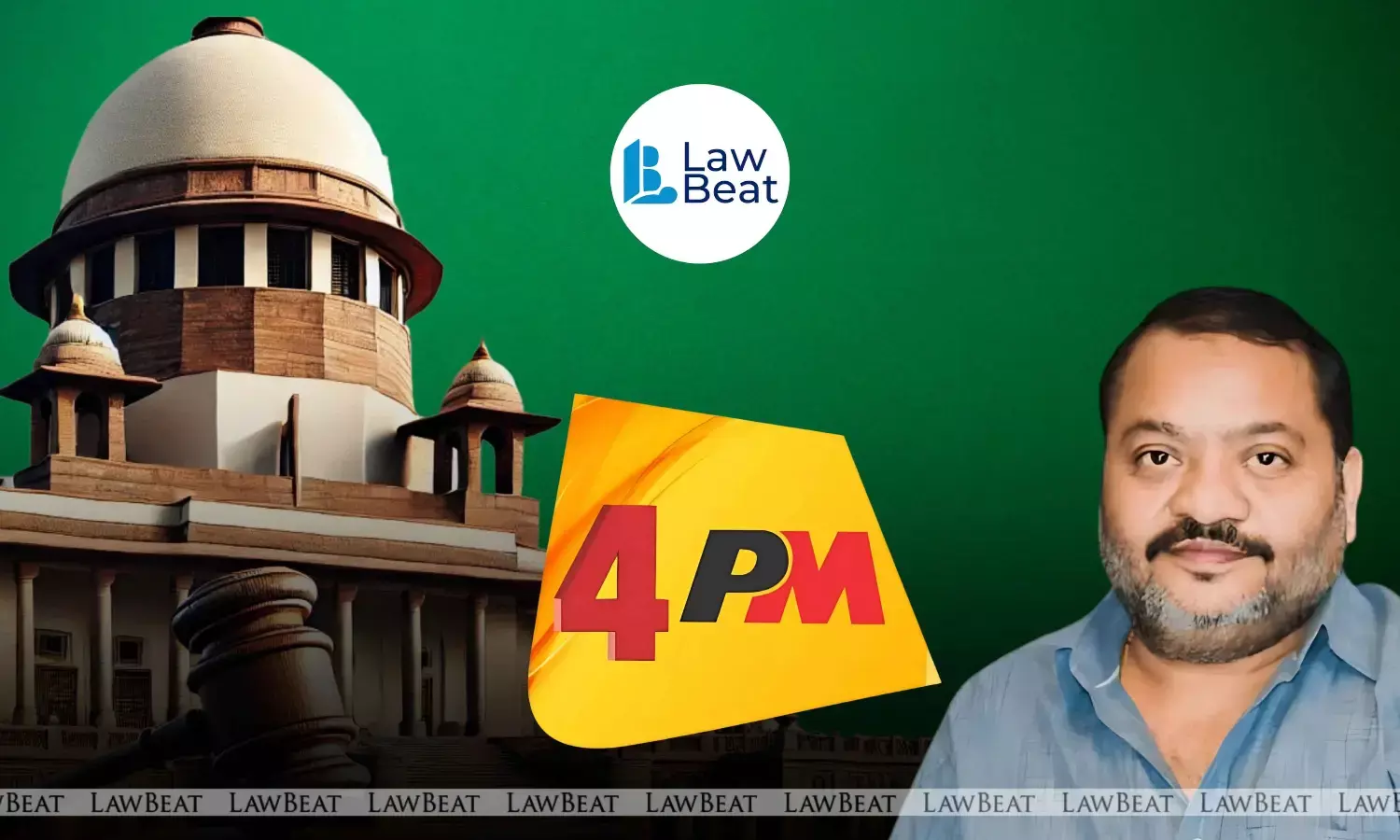4PM News Editor Sanjay Sharma Moves Supreme Court Against Blocking of Youtube Channel

Senior journalist and Editor of the popular digital news platform “4PM,” Sanjay Sharma, has approached the Supreme Court challenging the blocking of his YouTube-based news channel by the Central Government on undisclosed grounds allegedly related to “national security” and “public order.”
In his writ petition filed under Article 32 of the Constitution, Sharma contends that the action was carried out arbitrarily and in violation of statutory and constitutional safeguards. He alleges that the blocking was executed by YouTube, acting as an intermediary, pursuant to undisclosed directions from the Union Government, without furnishing any copy of the blocking order or the underlying complaint. The channel, which has over 73 lakh subscribers, has been rendered inaccessible without any notice or opportunity of hearing.
The petition filed through Advocates Syed Mohammad Haider Rizvi, Talha Abdul Rahman, and M Shaz Khan, invokes the Supreme Court’s landmark judgment in Shreya Singhal v. Union of India, wherein Section 69A of the Information Technology Act, 2000 was upheld only on the basis that it incorporated procedural safeguards.
Sharma argues that the blocking in his case violates the very safeguards that form the bedrock of the Court’s decision in Shreya Singhal.
Challenging Rules 8, 9, and 16 of the Information Technology (Procedure and Safeguards for Blocking for Access of Information by Public) Rules, 2009, the petitioner asserts that the Rules are ultra vires both the parent statute and the Constitution.
He contends that the Rules permit secretive blocking without any hearing, thereby violating Articles 14, 19(1)(a), and 21 of the Constitution. Rule 16, in particular, which provides for confidentiality of blocking orders, is said to subvert procedural fairness and the right to judicial review.
The petition states that vague invocations of “national security” and “public order” cannot insulate executive actions from judicial scrutiny, especially when the alleged offending content is not even disclosed. “Blanket removal of content without an opportunity to be heard is impermissible under our Constitution,” the plea reads.
Invoking the doctrine of proportionality, the petitioner further contends that even assuming some content was objectionable, a complete takedown of the entire channel is manifestly excessive and disproportionate. He cites Modern Dental College v. State of Madhya Pradesh and other rulings to argue that the least restrictive measure must be adopted to achieve any legitimate state objective.
The petition also notes that similar issues concerning the IT Blocking Rules are currently pending before the Supreme Court in Software Freedom Law Centre v. Union of India (W.P.(C) No. 161 of 2025), underscoring the broader constitutional implications of the case.
Describing the blocking as a “chilling assault on journalistic independence and the public’s right to receive information,” Sharma seeks quashing of the impugned blocking action, a declaration that the relevant Rules are unconstitutional, and immediate restoration of access to his digital platform “4PM.”
The prayers sought by the petitioner are:
a) To issue a writ, order or direction in the nature of Mandamus, calling upon the Respondent No.1 to produce the blocking order with reasons and records, if any, issued to Respondent No.3 for blocking the YouTube Channel of the Petitioner “4 PM”;
b) To issue a writ, order or direction quashing the blocking order passed by the Respondent No.1 after calling upon the Respondent No.1 to produce the blocking order with reasons and records;
c) Issue an appropriate writ, order or direction or declaration quashing and setting aside Rule 16 of the Information Technology (Procedure and Safeguards for Blocking for Access of Information by Public) Rules, 2009;
d) Issue an appropriate writ, order or direction or declaration, declaring the said rule null and void and/or reading the word ‘shall’ to be a compulsory requirement and reading down Rule 8 of the Information Technology (Procedure and Safeguards for Blocking for Access of Information by Public) Rules, 2009 to ensure a conjunctive reading of the term “or” as “and”, and ensure that the notice for blocking be issued to the intermediary as well as the person (originator or creator of the content);
e) Issue an appropriate writ, order, or direction or declaration striking down and/or reading down Rule 9 of the Blocking Rules, 2009, to mandate the issuance of a notice, opportunity of hearing, and communication of a copy of the interim order to the person (originator or creator of the content) prior to the passing of a final order;
Case Title: Sanjay Sharma v. Union of India & Ors.
